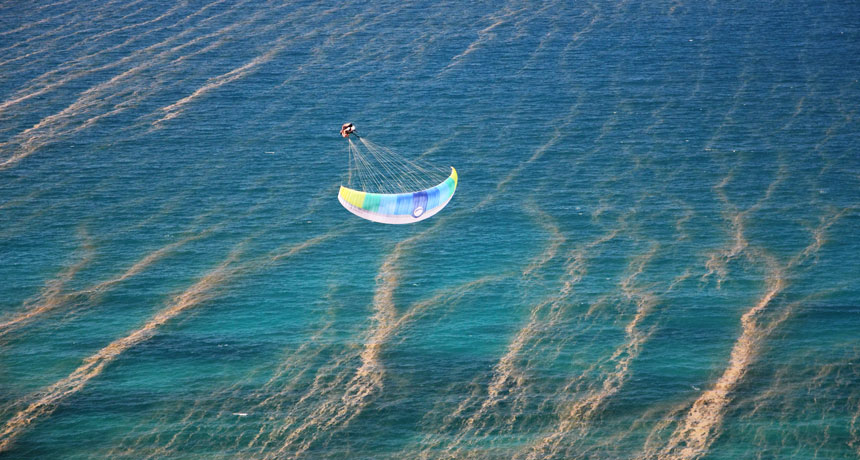Ocean acidification may hamper food web’s nitrogen-fixing heroes

A hard look at experimental setups may start to explain dueling predictions on whether ocean acidification will boost, or choke, vital marine nitrogen fixers. So far, the new look trends toward choking.
As people release more and more carbon dioxide into the air, the ocean takes up the gas and edges closer toward acidity. In these shifting waters, marine microbes called Trichodesmium could falter in adding nitrogen, a critical input for marine food webs, says Dalin Shi of Xiamen University in China. And the problem could be exacerbated in acidifying seas where iron is scarce — for instance, in wide swaths of tropical and subtropical waters such as the southern Atlantic and Pacific oceans, Shi and colleagues report April 27 in Science.
The question of how Trichodesmium cyanobacteria are reacting to the changing ocean makes a big difference in predicting how other marine life, from whales to mere specks of floating plankton, will react, too. Nitrogen, essential to life for such basic processes as building DNA and proteins, makes up much of Earth’s atmosphere. Yet most living things can’t do any chemistry with the atmospheric form, two nitrogen atoms fiercely triple-bonded to each other. Trichodesmium microbes, however, can crack those bonds and transform nitrogen into more usable forms. These cyanobacteria may account for up to half of the nitrogen fixed in the ocean.
Lab research in the past 10 years generally suggested that increasing CO2 encouraged the photosynthetic Trichodesmium to grow more abundantly and supply more usable nitrogen. The rates varied, however. But when Shi and colleagues tried their version of the experiment, they found a decrease in nitrogen fixation, not an increase. “I was very excited, and I was really puzzled,” says Shi, who published the results in 2012.
After a string of detailed lab work, from culturing lab microbes to sampling wild cyanobacteria, he and colleagues propose an explanation for the contradictions. For one thing, much of the previous lab work used a recipe for artificial seawater that permitted contamination by toxic metals and forms of nitrogen, the researchers concluded. These unwanted additions introduced unexplained variety to the results.
Also, Shi and collaborators demonstrated that rising CO2 alone can stimulate the microbes’ growth but that the watery slide toward ocean acidity can depress the microbes’ ability to fix nitrogen. And if the cyanobacteria are growing in water short on iron, an essential nutrient for them, the slowdown in nitrogen fixation can overwhelm any positive growth effects from extra CO2.
The paper could be a big help in resolving the contradictions among experiments, says oceanographer Douglas Capone of the University of Southern California in Los Angeles.
Orly Levitan, an author of what may have been the first study of acidification boosting nitrogen fixation, says she would consider changing her seawater recipe based on the new paper if she were to revisit this work. Yet Levitan, who studies plankton at Rutgers University in New Brunswick, N.J., cautions against extrapolating too far. A look at wild Trichodesmium suggests that the cyanobacteria may have unexpected ways of compensating in iron-starved waters, enhancing the capture of minerals from dust settling out of the air, for instance. It’s too early, she says, to close discussion on what will happen in the complexities of the real ocean.